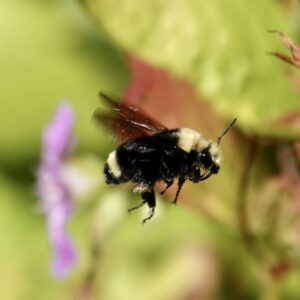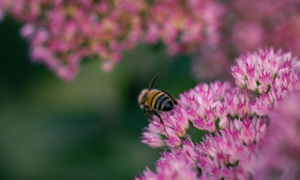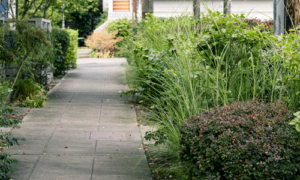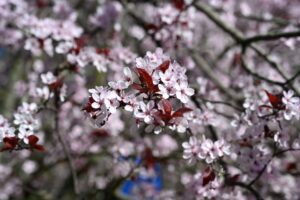Borage is an easy, fast-growing, annual herb with vivid blue flowers and the flavor and scent of cucumbers. While it is considered an herb, it’s often grown as a flowering plant to entice pollinators into vegetable gardens. Borage is considered a good companion plant for tomatoes, squash, and strawberries. It’s even supposed to deter tomato hornworms and improve the flavor of tomatoes growing nearby. Borage is annual plant, but it self-seeds readily. Description from thespruce.com
Home > Plant Guide >
Scientific Name
Family
Garden Type
Wildlife
Native Plant Region
Light needs
Water Needs
Plant Type
Bloom Color(s)
Height
Width
Months in Bloom
Safe Beneath Power Lines?

We’d like to maintain accurate and robust plant listings. If you see information that is not correct or that could be added to improve the listing, please let us know. Or if you’d like to suggest a plant to add to our plant guide, you can use this form do so. Thank you!

Look closer…and meet the local insects that pollinate the plants around your Seattle neighborhoods. Learn about some of our amazing native pollinating insects.

This workshop will guide you through the process and materials needed to help you decide if Mason Bees are right for you and your garden, whether you have a small deck or an open garden.

Protecting the trees and other vegetation that what we currently have is perhaps the most important way to ensure biodiversity in cities.

Do you want to plant a tree, create butterfly habitat, or start a vegetable garden but don’t have a yard? Learn how planting strips are a great place to start your own garden!

Learn about diversifying the way architecture is taught and practiced from designers of color.

Gardeners can check out seeds for free from the library to plant. Then after harvest, gardeners bring seeds back to the library for others to enjoy in future growing seasons.
Nature of Your Neighborhood is a collaboration between Birds Connect Seattle, the Capitol Hill EcoDistrict, and the Seattle Bird Conservation Partnership. Our goal is to foster relationships between the people and the nature of their neighborhoods.